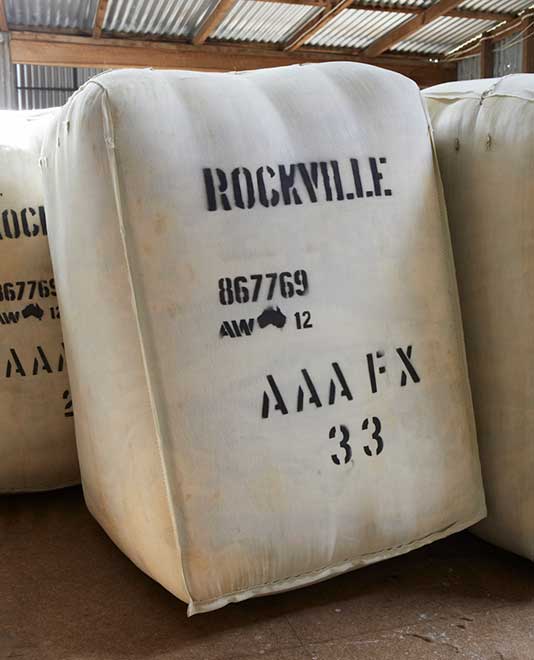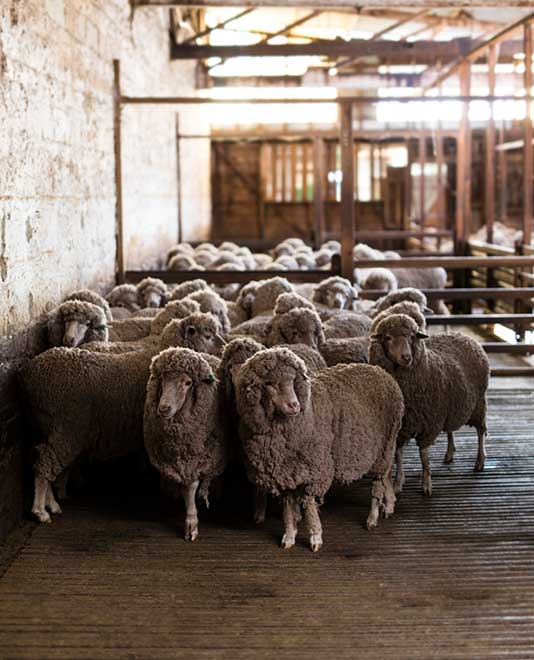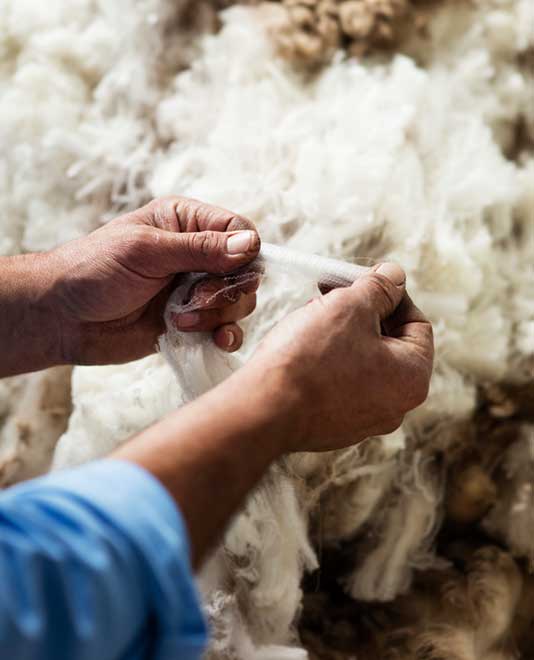When Gabrielle ‘Coco’ Chanel shocked the fashion industry in 1916 by turning jersey – at that time commonly used for men’s underwear – into chic women’s dresses, she not only revolutionised the use of the traditional wool fabric, but also the way in which women dressed. Transforming the humble fibre into a fashion staple, women across the world began dressing in wool – a fibre previously reserved for utilitarian garments such as military uniforms and workwear. A century on, the rise and rise of wool in fashion goes far beyond the innovative use of wool jersey. Today, the world’s most notable fashion houses and designers continue to send wool looks down the runway, and fashion’s next generation is discovering new and innovative ways to work with the natural fibre.
“Transforming the humble fibre into a fashion staple, women across the world began dressing in wool – a fibre previously reserved for utilitarian garments such as military uniforms and workwear.”

Yet far away from the glitz and glamour of the high streets of Paris, London, Tokyo, Milan or New York lie the sheep stations of Australia – the world’s largest producer of Merino wool. Sheep have played an integral role in Australia since European settlement, etching their way into the history books. For a century, the wool industry gave Australia one of the highest living standards in the world as the nation rode on the sheep’s back to prosperity. The golden fleece allowed for pastoralists to lead sustainable lifestyles and for Australia’s economy to thrive. Many rural and regional communities continue to be supported by this most Australian of industries, with more than 50,000 Australian farmers and many tens of thousands more working in the industry. Most farms continue to be family-owned and -operated, with unique skills and a great sense of pride passing from one generation to the next.

Australian woolgrowers work tirelessly to conserve the pastures on which their Merino sheep graze, protecting and preserving the natural resources for future generations while maintaining the efficiency of their land. "It's like we're training for the Olympics every year; we're always aiming for the gold medal,” muses fifth-generation woolgrower Matthew Coddington and his wife, Cherie, hinting at the level of quality expected in today’s market. "My family moved out here from England in 1880. Prior to that, they'd been farming for 500 years and for every generation [since] it's been harder and harder to move ahead financially. In the 1950s, a bale of wool could buy a brand new motor car. Now you have to sell 30 bales of wool to buy a motor car." From their property, Roseville Park, near Dubbo in New South Wales, where they live with their five children, the Coddingtons strive to combine the natural elements with the genes of the finest rams to produce superior Merino wool. "As a farmer, there are two things we do: we harvest sunlight and water and we turn that sunlight and water into grass," Matthew says. "That's all wool needs to grow. It's just natural."

Merino sheep are an iconic part of the Australian landscape.
“Australian Merino farmers work tirelessly to conserve the pastures on which their Merino sheep graze, protecting and preserving the natural resources for future generations while maintaining the efficiency of their land.”
Yet whilst we know that sheep thrive on the simple mix of sunshine, grass, water and air, life on the land is never easy, but for three generations of the Lebrun clan, they wouldn't have it any other way. On their property, Wullara, grandfather Will, father Dion and son Lenny make sure it stays all in the family. Beyond passing on artisan skills honed over decades of passion, each generation must make room for the next to make their own decisions – and mistakes – as they prepare to take over the business. There are no guarantees, of course. Will even likens life on the farm to "legalised gambling". But it’s a gamble that has paid off.

Raw Merino wool fibre is assessed and classed prior to its auction, to which it will travel in bales.
Australian Merino farmers work tirelessly to conserve the pastures on which their Merino sheep graze, protecting and preserving the natural resources for future generations while maintaining the efficiency of their land. Ethical and environmentally-sensitive farming can be as important for today's discerning customer as the quality of the clothing itself. It’s this natural, renewable and biodegradable fibre that is not only the backbone and livelihood for many Australians, but it’s a fibre that inspires the world’s leading fashion designer and labels, as well as the most promising emerging design talents. Merino wool, after all, is the ultimate ingredient in luxury apparel. No other fibre performs like it, giving it the edge in high-end fashion and sports apparel and making it the perfect choice for those seeking clothing with minimal impact on the environment.
"As a farmer, there are two things we do: we harvest sunlight and water and we turn that sunlight and water into grass.”
It’s these designers who fall in love with wool after discovering its plethora of inherent benefits – natural, renewable, biodegradable, breathable, fire- and wrinkle-resistant. But it’s not until designers travel to Australia, to go to the actual source and meet the men and women who produce this remarkable fibre, do they truly embrace and appreciate Merino wool. “It was amazing to be on a wool producing property to see the passion and dedication woolgrowers have towards the fibre and their animals,” explains fashion designer Catherine Teatum of London-based label and International Woolmark Prize winner Teatum Jones on a recent visit to a farm. “As designers, we have a lot in common with woolgrowers as we use both traditional and modern technology to create a product for a specific market, a season and of course a price. It’s great to have us all linked by the one great natural fibre.”
2013/14 International Woolmark Prize winner Rahul Mishra echoes this sentiment, saying: "The farm visit was inspiring and humbling, seeing the environment where the fibre starts from and the people and animals that grow it has convinced me even more why wool is the perfect sustainable fibre for the future, not just for winter but warmer months as well."
